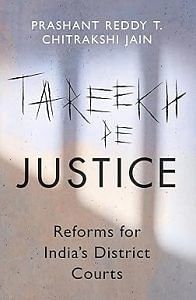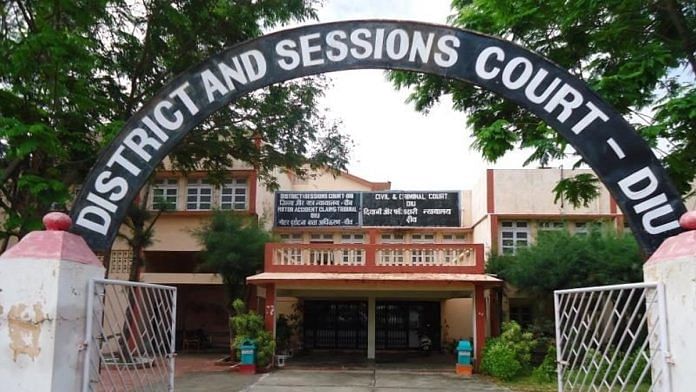There is a second category of judges who, like probationary judges, have no right to be heard before being dismissed from the judicial service. These are the judges who can be dismissed via the route of ‘compulsory retirement’ after they reach certain milestone ages. For example, in Gujarat, the judges of the district judiciary can be considered for ‘compulsory retirement’ as they cross the milestone ages of 50, 55 and 58 years. These judges are not new appointees and generally have at least a decade in service, if not more.
The High Courts are not required to conduct any disciplinary hearings in these cases or provide reasons to them in writing. The decision is taken by committees of judges of High Courts based on their perception of the judge’s performance. These official orders compulsorily retiring judges generally state that the judge is being dismissed in the larger ‘public interest’ and no specific reasons are provided for the dismissal. Usually, these judges will receive some retirement benefits.
Over the last two decades, High Courts have increasingly used the route of compulsory retirement to dismiss judges of the district judiciary from the judicial services. For example, in the year 2016, the Gujarat High Court ‘compulsorily retired’ eighteen judges on the grounds that their performance was below par.
While High Courts do not proactively release statistics on the number of judges of the district judiciary being compulsorily retired, we do know from newspaper reports that just five High Courts compulsorily retired ninety-four judges of the district judiciary, between the years 2009 and 2024, in mass firings. This statistic does not include instances that did not make it to the newspapers.
So why are judges fired in such a brazenly unfair manner? A bit of history may help explain the problem.
The origins of ‘compulsory retirement’ can be traced to norms laid down in 19th-century British India for the civil services which were aimed at getting rid of bureaucrats who were unable to secure promotions to higher posts within the civil service. A report of the Public Service Commission on the colonial civil service in India, published in the year 1888, had this to say about compulsory retirement in the civil services:
No officer, who is declared unfit for promotion in due course, should be retained in its ranks. The efficiency of the Provincial Service is scarcely of less importance, and the Commission accordingly recommends, as a general rule, that officers of the Imperial and Provincial Services, if declared ineligible for promotion, should, after a certain period of service, be liable to be compulsorily retired on reduced pensions calculated with reference to their period of effective service.
Also read: Nb Sub Chunni Lal is first Indian soldier to win all 3—Vir Chakra, Ashok Chakra & Sena Medal
A similar system exists in many private sector organizations, where it is called an ‘up or out promotion system’. Under this system, if an employee fails to qualify for a promotion at a certain level, they are asked to leave the organization.
In the case of the judiciary, it appears that compulsory retirement without cause was introduced relatively recently, at the urging of the Supreme Court, without completely comprehending the effects of the policy. This policy is the result of litigation, during the mid-1990s, by the All India Judges Association (AIJA), which represents the district judiciary and advocates for an improvement of their employment conditions. Amongst other demands, the AIJA had asked for raising the retirement age of the district judiciary from 58 years to 60 years.
The court asked state governments to raise the retirement age, with the rider that the extension of two years should be contingent ‘on the basis of the judicial officers’ past record of service, character rolls, quality of judgments and other relevant matters’. The court then proceeded to instruct High Courts to compulsory retire judges who failed to pass such an assessment.
In that same judgment, the Supreme Court had asked the government to set up a commission to study conditions of employment of the district judiciary. The commission, set up in 1996, was headed by a former judge of the court, Justice K. Jagannatha Shetty, and is generally referred to as the Shetty Commission. The Commission recommended a review of the performances of all judges of the district judiciary at the ages of 50 years, 55 years and 58 years.
In pertinent part, it urged High Courts to ‘weed out in public interest’ those judges of the district judiciary who were considered to be ‘deadwood’. There was not a whisper in the report on the impact of such a ‘compulsory retirement’ process on the decisional independence of those judges in the district judiciary in the age bracket of 50 to 58 years.
In both these scenarios, be it the dismissal of a probationary judge or ‘compulsory retirement’ of judges who reached milestone ages, the decision-making process by High Courts is guided significantly by an assessment of the Annual Confidential Reports (ACRs) prepared by the supervising judge. Much of the criteria in the ACR is subjective and reflects only the views of the supervising judge. For example, the supervising judge has to provide his assessment about the integrity, knowledge, quality of judgments and the relationship of the judge with the bar and the staff.
The disposal rates of the judge, as measured by the unit system, are also reflected in the ACR. In essence, ACRs are an evaluation of the judge’s competence on an annual basis but are not the sole guiding factor. The quality of judgments written by the judge, allegations made against the judge, pending disciplinary proceedings and her track record on the administrative side are also reviewed by the administrative committee of judges of High Courts, which makes the final recommendation to the Full Court, which then makes a binding recommendation to the state government. In the case of both, probationary judges and judges being compulsorily retired, the assessment is essentially of the competence of the judge to continue serving in office.
Since there is no requirement for High Courts to provide specific reasons for dismissing probationary judges or compulsorily retiring judges of the district judiciary, there is little transparency in how these decisions are being made by the High Courts. Given the opacity baked into the process, it is entirely possible that High Courts use these avenues to dismiss judges against whom they have suspicions of impropriety but lack evidence to conduct proper disciplinary proceedings.
 This excerpt from Prashant Reddy T and Chitrakshi Jain’s ‘Tareekh Pe Justice: Reforms for India’s District Courts’ has been published with permission from Simon & Schuster India.
This excerpt from Prashant Reddy T and Chitrakshi Jain’s ‘Tareekh Pe Justice: Reforms for India’s District Courts’ has been published with permission from Simon & Schuster India.






